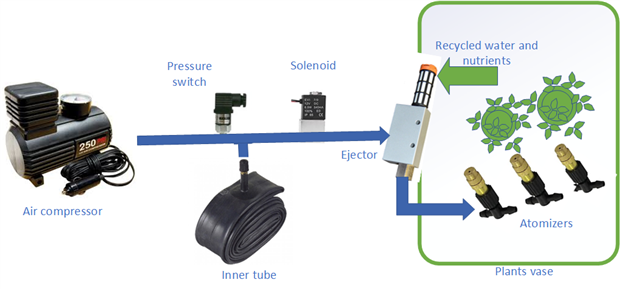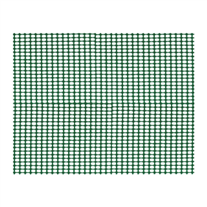Here is a list of the posts in this challenge
Gr0G - 03 - High-pressure system design
Gr0G - 07 - Playing with the Gertbot
Gr0G - 11 - Building the box (2)
Gr0G - 12 - Building the high-pressure system
Gr0G - 13 - Building the high-pressure system (2)
Source code available at https://github.com/ambrogio-galbusera/gr0g, https://github.com/ambrogio-galbusera/gr0g-ble-android and https://github.com/ambrogio-galbusera/gr0g-ble
In this post, I will try to share some thoughts about the design that came into my mind when I tried to think about an aeroponic system that may work both on a planet and in microgravity
- In microgravity, water behaves in a completely different way than on earths. You can not collect water in a tank, because it floats around in spheres because of surface tension. This means you can not use a pump. The only way I can think of to "drive" water is to use differences in pressure
- The Gr0G box has some limitations in terms of air circulation. For this reason, plant roots may suffer because of poor oxygenation
- The system must be small and lightweight, because taking heavy luggage on a starship is really expensive
For all the above-mentioned reasons, I designed a high-pressure system that creates an air-water mixture to send both water (with nutrients) and oxygen to the roots. The diagram below shows a schematic of the system
The main components here are
- a small air compressor. I have a small 12 volts compressor in my garage for use on your car when your tire runs flat. It should provide enough pressure and, furthermore, it is small enough to be placed inside the Gr0G box
- a pressure switch, to stop the compressor when the pressure reaches a certain threshold value
- an inner tube to accumulate compressed air. This may sound strange, but the idea is to build a compressed air reserve for free. The need for a reserve will be clear later in this post, but basically the output of the compressor is not enough to create a burst that atomizes water. I searched for a small compressed air tank, but prices were absolutely out of budget. So I started looking for something that can handle compressed air safely and that was cheap. I finally realized that a inner tube is the perfect solution: it is almost ready to use, because the valve is already safely in place and you can find it for free. The only drawback is that an inner tube expands a lot, so I will need to build a sort of "containing box". Currently, the approach I like the most is to build a bag with the green net typically used in gardening to build fences (see picture)
- a solenoid, to let compressed air be conveyed to the ejector and, then, to the atomizing nozzles. The solenoid will be driven by the application running on Raspberry Pi board to implement an algorithm that can adapt pulse duration to the conditions you may encounter on a planet and in microgravity
- an ejector, to suck water from the vase where plants are growing by creating a pressure gradient through Venturi effect. Because of such a pressure gradient, air and water in the vase will be sucked and sprayed through the nozzles. Additional nutrients and water can be added through an hole (sealed with a cap, to prevent water from floating around in the starship cabin) as required. This design has also the benefit to recycle water that has not been absorbed by the plant roots
With this design in mind, this is the list of items I need to find or buy
- A pressure switch
- A solenoid
- An ejector
- An inner tube
- Nozzles
- Pneumatic piping (1/4 inch)
- Joints to adapt inner tube valve to 1/4 inch piping
- Joints to adapt compressor tube to 1/4 inch piping
- A couple of tee (one to connect the pressure switch, one for the inner tube)



Top Comments
-

balearicdynamics
-
Cancel
-
Vote Up
+1
Vote Down
-
-
Sign in to reply
-
More
-
Cancel
Comment-

balearicdynamics
-
Cancel
-
Vote Up
+1
Vote Down
-
-
Sign in to reply
-
More
-
Cancel
Children